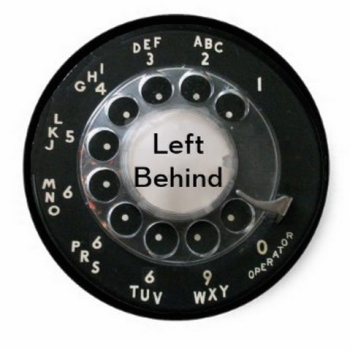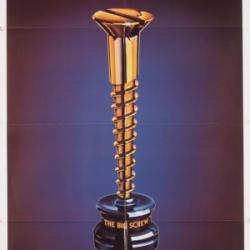I should say, first off, that I like paying my rent and, you know, eating. These are Good Things in my book. And since my paycheck comes from Big Corporate Media — and specifically from online Big Corporate Media, and therefore from the ad revenue for online BCM — I don’t want to saw off the branch I’m sitting on by suggesting there shouldn’t be any such ads.
But since my livelihood is, in fact, staked on this kind of advertising, I also have a stake in seeing these ads done right. To me, that means ads that don’t unduly burden or confuse readers and that don’t alter or influence content. I’d also like to think that the creatures from Advertising Land who sell these ads aren’t deliberately swindling our advertisers, either — meaning that ads that charge per click shouldn’t be generating illegitimate clicks by deception or misdirection (a la The Bride of Clippy).
Embedded, in-text advertising seems to me to fail on every one of those points. Criticizing it isn’t a matter of “I wanna bite the hand that feeds me,” then, it’s a matter of making sure that this feeding is sustainable and not left “in the hands of such a lot of fools tryin’ to anaesthetize the way that you feel,” as it were.
When online BCM opts for the short-term revenue bump that these kinds of ads promise to provide, they’re being penny-wise and pound-foolish. Annoying readers is not a good way to increase traffic over the long run. Undermining the credibility of the news they provide diminishes the only product news organizations have to offer. And bilking advertisers with borderline click-fraud doesn’t seem likely to appeal to those advertisers in the long run either.
So there’s that.
But there’s another, separate reason that I find these in-text ads so infuriating.
Let me illustrate this with an example from today’s paper, in the nutrition column, “Americans are suckers for weight-loss scams.” After cautioning readers to be wary of diet fads and weight-loss schemes, the columnist suggests that they read more about this at the FTC’s consumer protection Web site. Here’s how that final paragraph appeared in the print edition of the column:
For tips on avoiding weight loss scams, visit the FTC’s Web site at www.ftc.gov. Click on “consumer protection,” then “consumer information.” Then, select “diet, health & fitness.”
That’s a bit clumsy and long-winded, but in print, in non-hyper-text, referring readers to URLs is necessarily clumsy and long-winded. (It might have been easier to tell readers to “visit www.ftc.gov/bcp/menus/consumer/health.shtm,” but the impulse to avoid longish URLs in print is a good one.)
One of the immensely frustrating things about the “New Media” sites of BCM is that you will see — online — paragraphs that look exactly like the one above from the print edition. You won’t find this awkward transposition of non-hypertext as hypertext anywhere on the Web except for these BCM sites, where shovelware is used to take chunks of printed material and dump it unceremoniously into Web templates. Even the laziest blogger (and I know from lazy bloggers) would never post something like the following:
Atrios has a good comment on this. To read what he has to say, visit the Web log (or “blog”)
Eschaton at http://atrios.blogspot.com and then scroll down to the entry titled “Wheeeeeeeeee.”
Yet exactly that sort of thing can be found, on a regular basis, on newspaper Web sites. It creates the impression that you’ve stumbled across a tourist struggling to speak the language with a slightly out-of-date phrasebook.
BCM are enamored of that phrase “New Media” when referring to online journalism, yet they have been bewilderingly slow to understand what’s really new about it. Words and pictures, after all, are not new media. Video and animation and most of the other we-can-so-we-should bells and whistles these sites offer aren’t really new kinds of media either. The Internet, they seem to think, provides a new way to broadcast these things, but broadcasting also is nothing new. Hypertext, though, that’s new. Without hypertext, the Web might as well be just a big old gopher site with lots of .pdf and .mov files. Come to think of it, that’s a pretty good description of how BCM seems to treat the Web.
Now, finally, we’re seeing actual links on newspaper sites, yet even though these links appear in the news stories, as part of those news stories, they’re not news links. They’re ads. So in addition to all of the reasons listed above for why these ads are unwise, annoying and at best borderline ethical there’s also this: In-text advertising creates a barrier to newspaper sites ever fully realizing the potential of hypertext links. Once such links become established as the domain of advertising, the presence of news links within stories can only add confusion.
For an example of this, look no further than the nutrition column linked above. The certified shovelware operator who dumped this column onto the Web is also, by day, a blogger and avid consumer of online news. As such, he found that long string of “go to … and then click … and then click” instructions unacceptable and replaced it with the following:
For tips on avoiding weight loss scams, visit the FTC’s consumer protection Web site on Diet, Health & Fitness.
Slightly more elegant and Web-appropriate, but here’s the problem: the column also contains multiple in-text advertising links. The word “health” links to an ad for Promise margarine. The words “consumer” and “money” link to this ad for Capital One. And the phrase “weight loss” links to a sponsored search results page (which, awkwardly, includes lots of links to exactly the kind of diet and weight-loss schemes that the columnist is warning against).
The in-text ad links have a slightly different appearance than the legitimate news-content link supplied by the columnist herself. The advertising links are underlined in green text. The news link is not underlined and it’s in blue text.
This is what the distinction between news content and advertising has come down to: the difference between blue and green. I suppose this is what they mean by “yellow journalism.”












